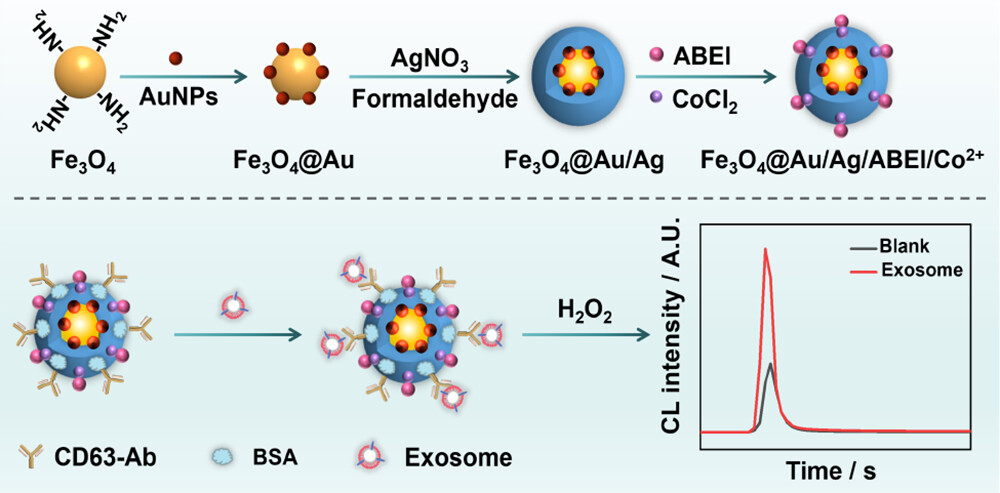Cui Hua

|
- Professor
- Supervisor of Doctorate Candidates
- Supervisor of Master's Candidates
- Name (English):Hua Cui
- Name (Pinyin):Cui Hua
- E-Mail:
- Business Address:环境资源楼-339
- Contact Information:0551-3600730
- Degree:Dr
- Professional Title:Professor
- Teacher College:Chemistry and Materials Science
 Contact Information
Contact Information
- Fax:
- OfficePhone:
- Email:
- Paper Publications
N-(4-Aminobutyl)-N-ethylisopropanol and Co2+ Dual-Functionalized Core–Shell Fe3O4@Au/Ag Magnetic Nanomaterials with Strong and Stable Chemiluminescence for a Label-Free Exosome Immunosensor
Release time:2023-08-20 Hits:
- DOI number:10.1021/acs.analchem.3c03135
- Journal:Anal. Chem.
- Abstract:Recently, magnetic beads (MBs) are moving toward chemiluminescence (CL) functional magnetic nanomaterials with a great potential for constructing label-free immunosensors. However, most of the CL-functionalized MBs suffer from scarce binding sites, easy aggregation, and leakage of CL reagents, which will ultimately affect the analytical performance of immunosensors. Herein, by using core–shell Fe3O4@Au/Ag magnetic nanomaterials as a nanoplatform, a novel N-(4-aminobutyl)-N-ethylisopropanol (ABEI) and Co2+ dual-functionalized magnetic nanomaterial, namely, Fe3O4@Au/Ag/ABEI/Co2+, with strong and stable CL emission was successfully synthesized. Its CL intensity was 36 and 3.5 times higher than that of MB@ABEI-Au/Co2+ and ABEI and Co2+ dual-functionalized chemiluminescent MBs previously reported by our group, respectively. It was found that the excellent CL performance of Fe3O4@Au/Ag/ABEI/Co2+ could be attributed to the enrichment effect of the Au/Ag shell and the synergistic enhance effect of the Au/Ag shell and Co2+. A related CL mechanism has been proposed. Afterward, based on the intense and stable CL emission of Fe3O4@Au/Ag/ABEI/Co2+, a sensitive and effective label-free CL immunosensor for exosome detection was established. It exhibited excellent analytical performance with a wide detection range of 3.1 × 103 to 3.1 × 108 particles/mL and a low detection limit of 2.1 × 103 particles/mL, which were better than the vast majority of the reported CL immunosensors. Moreover, the proposed label-free CL immunosensor was successfully used to detect exosomes in human serum samples and enabled us to distinguish healthy persons and lung cancer patients. It has the potential to be a powerful tool for exosome study and early cancer diagnosis.
- First Author:王慢莉
- Co-author:黄大兵,王依莎,吕爱华,王珊珊,shujiangnan
- Indexed by:Journal paper
- Correspondence Author:Hua Cui
- Discipline:Natural Science
- Document Type:J
- Volume:95
- Issue:34
- Page Number:12982–12991
- Translation or Not:no
- Date of Publication:2023-08-16
- Included Journals:SCI
- Links to published journals:https://pubs.acs.org/doi/10.1021/acs.analchem.3c03135


